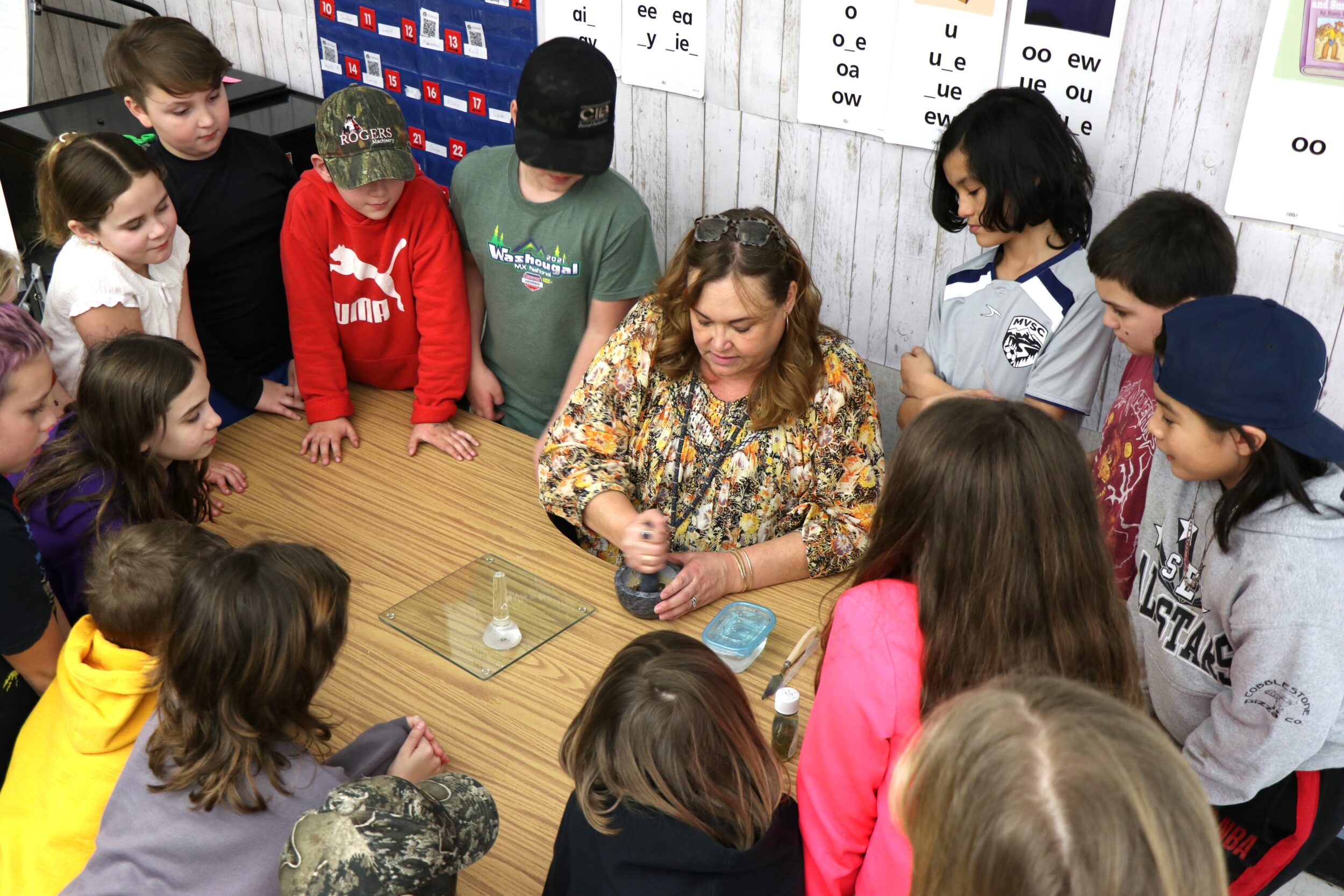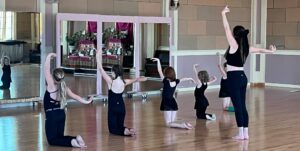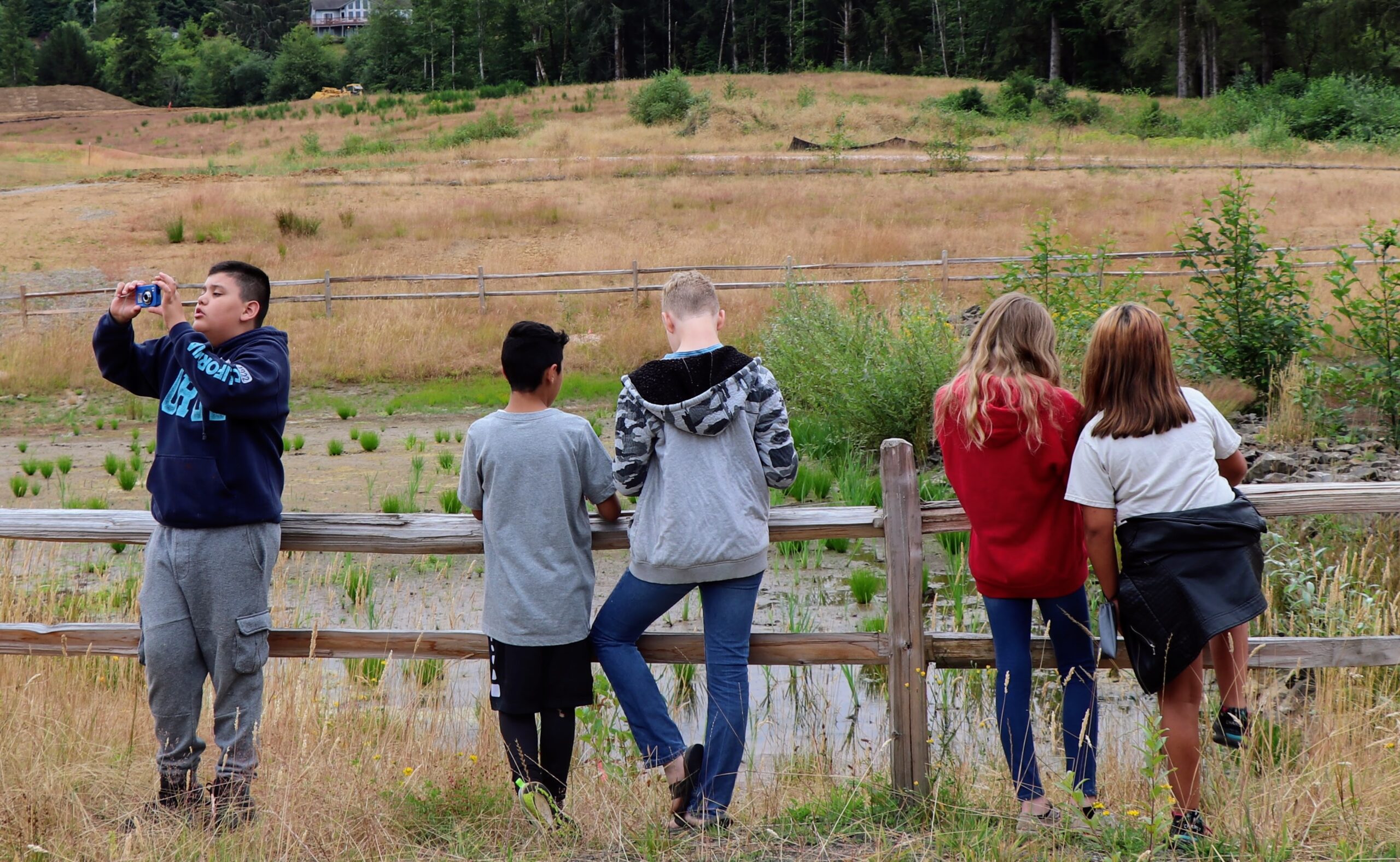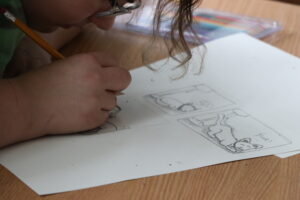
By LORI TOBIAS/Oregon ArtsWatch
The Sitka Center for Art and Ecology’s youth art program has been a hit with Oregon coast school districts — from top administrators to kids doodling at their desks — enthused about the classes.
It’s been so successful that the nonprofit is expanding it into five more districts this fall. Another measure of that success: Sitka has inspired a whole new program that will teach students a different sort of art – dance.
The dance program started via a conversation a year ago, when Knappa School District superintendent Bill Fritz bumped into Jessamyn West, founder of the Astoria Arts and Movement Center, at a local arts summit. He asked how he might get a dance program going in Knappa schools.
West, long familiar with the Sitka Youth Program, knew exactly how: Find some sponsors, line up the teachers, and cha cha cha. And so, she did. The response is already so enthusiastic, she’s thinking about offering it to other schools.

“We’ve seen the emotional, physical, and educational benefits dance and the arts provide,” West said. “Statistically, students who are enrolled in arts education do better in other classes. A significant portion of our classes are targeted toward kids, but it can be a challenge for parents to get them to our center. This eradicates those barriers. This is why Sitka’s program is so important.”
West is patterning her program on that offered by the 54-year-old Sitka Center, a nonprofit based on Cascade Head in north Lincoln County that offers immersive experiences in art and nature for all ages. Its youth program grew out of the nonprofit Community Arts Project, which was founded in 1988 to offer art classes in Tillamook classrooms. By 2019, that project was struggling, so Sitka offered to take it over. By 2020, the transfer was complete and the project, renamed the Sitka Youth Program, got underway with 500 kids in two Tillamook schools.
Four years later, the youth program will begin the 2024-25 school year with 5,000 students in 17 schools — eight that are new — Waldport to from Astoria, including the addition of schools in both Clatsop and Lincoln counties.
“That’s 900 percent growth,” said Alison Dennis, Sitka’s executive director.
As word of the success spread, new districts have approached Sitka to partner with them, she said.
“We’re not going out and pitching this to anyone, but word of the quality of the program and the affordability of the program for schools that otherwise can’t afford to have a full-time teacher on their own is spreading from teacher to teacher and superintendent to superintendent, up and down the coast.”

Aimed at low-income districts
The Sitka Youth Program serves schools where 95 percent of the students qualify for free- and reduced-price meal programs and at least 20 percent of students either “homeless or housing insecure.” Districts new this fall are Astoria, Knappa, Seaside, Jewell, and Warrenton-Hammond; they join Lincoln County, Neah Kah Nie, Nestucca Valley, and Tillamook.
“The program was developed in response to strong community needs,” Dennis said. “Arts education plays a vital role in young people’s development, self-esteem, self-expression, and critical thinking, yet due to systemic underfunding, the schools in our area have no or limited arts programs.”
Sitka’s cost for the 2024-25 school year is $507,000. Participating schools pay $4,000, which includes all supplies. The remainder of the funds comes from various sources, including the Ford Family Foundation, the Reser Family Foundation, the Ronald W. Naito MD Foundation, the Oregon Arts Commission, and “a whole bunch of Oregon-based foundations coming together to make this happen…. If we were talking the cost to have a full arts program in schools, it would be in the millions,” Dennis said. “It’s a pretty low price tag to get art into a place where there was little or no art.”

The program has one full-time teacher, Leeauna Perry, who is also the program director, and three part-time teachers and is preparing to hire more. Teachers go into pre-kindergarten through eighth-grade classrooms one day a month, seven months of the year, with an art lesson tailored to the needs of each age group.
“They love art in general, but in these classes, they get to use material they would not necessarily have access to in their own art class,” said Ivette Almaguer, fourth-grade teacher at East Elementary School in Tillamook. She noted that students do have a school-provided art class, but it tends to be more craft oriented.
“What was really wonderful was how it tied into the biology of the region we live in,” Almaguer said. “Leeauna did a print with ferns and leaves and nature objects of our area. She also taught them how to make ink with charcoal from burnt material…. In each one of the classes, there was an introduction to an artist and this artist’s particular style and message. One was the tree of life. Everyone was to make their own tree of life. These are really cool classes that have a lot of thought put into them.”
The Astoria Arts and Movement Center dance program will operate similarly to Sitka’s program, with teachers visiting the gym space for grades 6 through 12 twice a month. They also plan an after-school club and an end-of-the-year performance. West talked with students about their interests and will offer a range of classes that may include: ballroom, swing, country line dance, ballet, belly dance, modern, bachata, and salsa.
“I think we are offering something for everyone and that’s important,” West said.
“Taking a class, especially a dance class, can be scary, but by offering a variety of classes, students may completely fall in love with something they’ve never tried before. Some of these classes also have cultural roots from different parts of the world, and our instructors continue to study in the countries these dances are from. I think bringing that kind of diverse education to schools can be incredibly inspiring.”
That’s what inspired Fritz, the Knappa superintendent, to find a way to add the classes to the district curriculum – that and the opportunity to help ensure the school day isn’t all work and no play.
“First, we want children to be well rounded,” Fritz said. “Not only do we want to tap into where kids’ talents are, but also branch out and grow. Art is what makes us human. I think we have an obligation to not just focus on reading and math, but things beyond that, like the arts.
“Our vision as a district is to have kids prepared to face the world. The more we can do to have experiences in our schools the kids look forward to, the more it helps with behavior. We have to have stuff that kids enjoy about school, because we want them to enjoy coming to school.”
- This story was originally published by community news partner Oregon ArtsWatch. It is supported in part by a grant from the Oregon Cultural Trust. For more arts news coverage go to Oregon ArtsWatch


